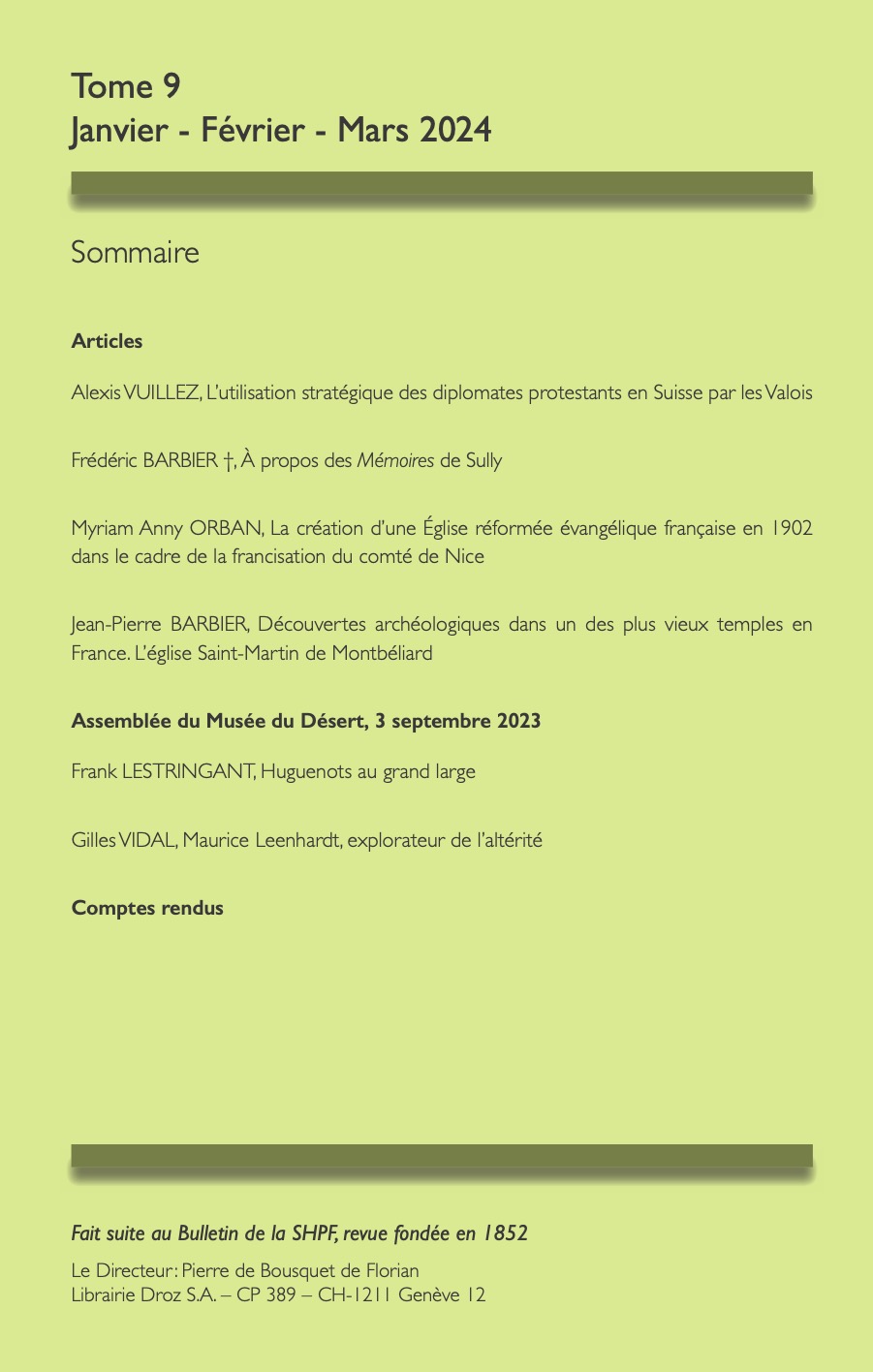La création d’une Église réformée évangélique française en 1902 dans le cadre de la francisation du comté de Nice
Abstract
The French Protestants living in Nice after its annexation to France in 1860, known as second-generation Niçois who were thus born outside of Var, grew in numbers. After some time, they sought to separate from the Waldensian church of Nice, which was tied to the Waldensian Table in Italy, and to create a French Reformed church. In 1899, a number of Protestants went on the clear offensive and initiated a strategy to rid themselves of the Waldensian pastor Auguste Malan (Augus-to Giovanni Malan). They also founded the Comité Protestant Français (CPF). The difficulties grew and were exacerbated by the frenchification process through which the Comté de Nice was passing at the time and by the specific political and religious circumstances in France. Furthermore, the CFP faced the reality of an internal division in Protestantism. Ever since the national synod of 1872, the French Protestant churches was split into two unions: one with an evangelical character, the other liberal-progressive. Around the same time, the state withdrew from the agreements that had been established during the so-called Concordat period. These debates were fuelled by the political and ideological climate. In spite of the many difficulties, the members of the CFP managed in 1902 to establish the Église Réformée de France, to secure a pastoral post, and to offer their pastors a salary owing to a one-time financial injection from the state.

